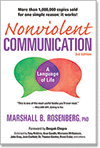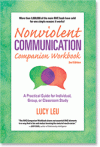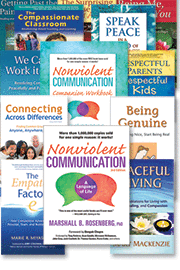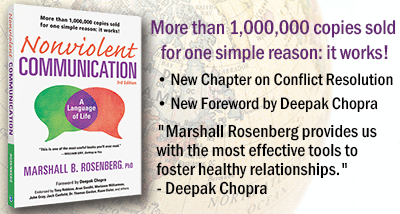| |
|
||
 |
|||
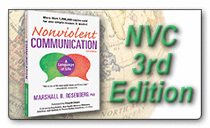 |
Now Available Nonviolent Communication: A Language of Life 3rd Ed. By Marshall Rosenberg, PhD |
|
The new Edition Includes:
|
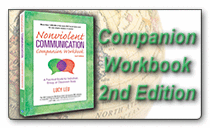 |
Now Available Nonviolent Communication Companion Workbook 2nd Ed. By Lucy Leu |
|
The new Edition Includes:
|
|
Two Title Special Nonviolent Communication 3rd Edition Nonviolent Communication Companion Workbook 40% to 50% Off All Five Save 40% to 50% off list price View Specials Details |
| Free Weekly NVC Tips
Series: Living Compassion NVC Tips Compassionate Parenting NVC Tips Workplace Communication NVC Tips Compassionate Educator NVC Tips Peaceful Living Meditations Free Tips Series Highlight:
Recommended Resources |
Marshall Rosenberg, Ph.D. talks about the keys to
prevent all forms of conflict and violence in this 10-minute
video.
Share This Inspiring
10-Minute Video With Your Friends
Go to the video
now and select the "Share This" link
in the right corner to share this video using your
favorite social media platform.
News from the NVC Network
None this month. Send us yours.
Useful Links
None this month. Send us yours.
From our online Marshall Rosenberg, NVC Quote
Collection.
"The mediator’s role is
to
"Maintaining respect is - Marshall Rosenberg
|
|
Nonviolent |
|
|
"My experience has - Marshall Rosenberg
"Avoid the use of - Marshall Rosenberg
"If we really want to be - Marshall Rosenberg
"The process of resolving - Marshall Rosenberg
|
|
Nonviolent Save 40% off list price |
|
|
"Marshall emphasizes that - Lucy Leu From the section, Investigating
40% to 50% Off All Five Save 40% to 50% off list price View Specials Details
|
